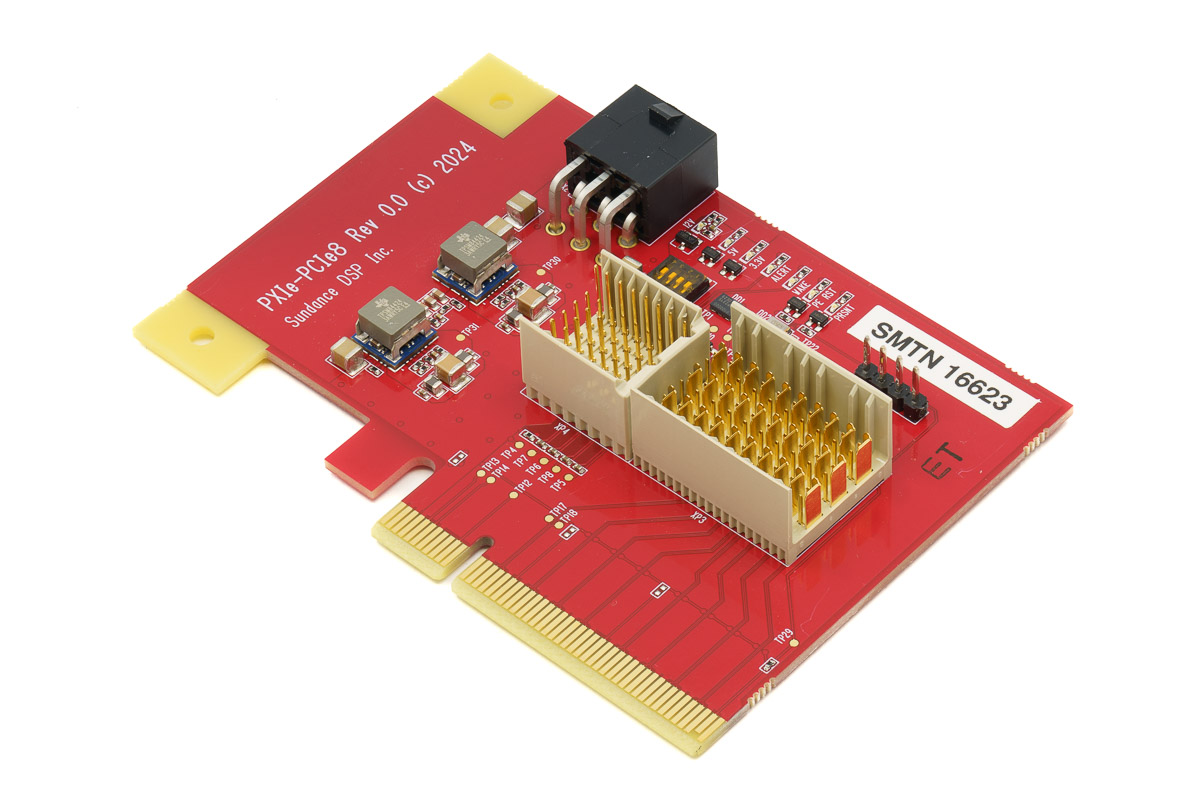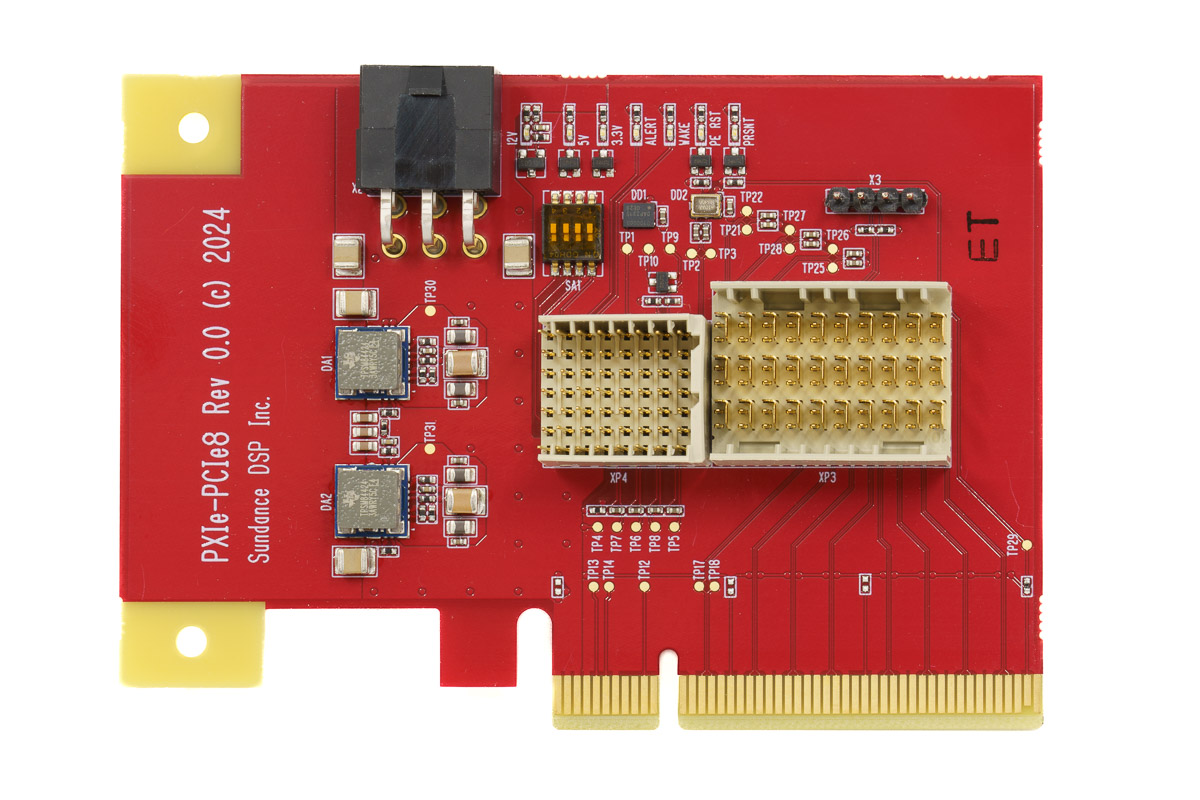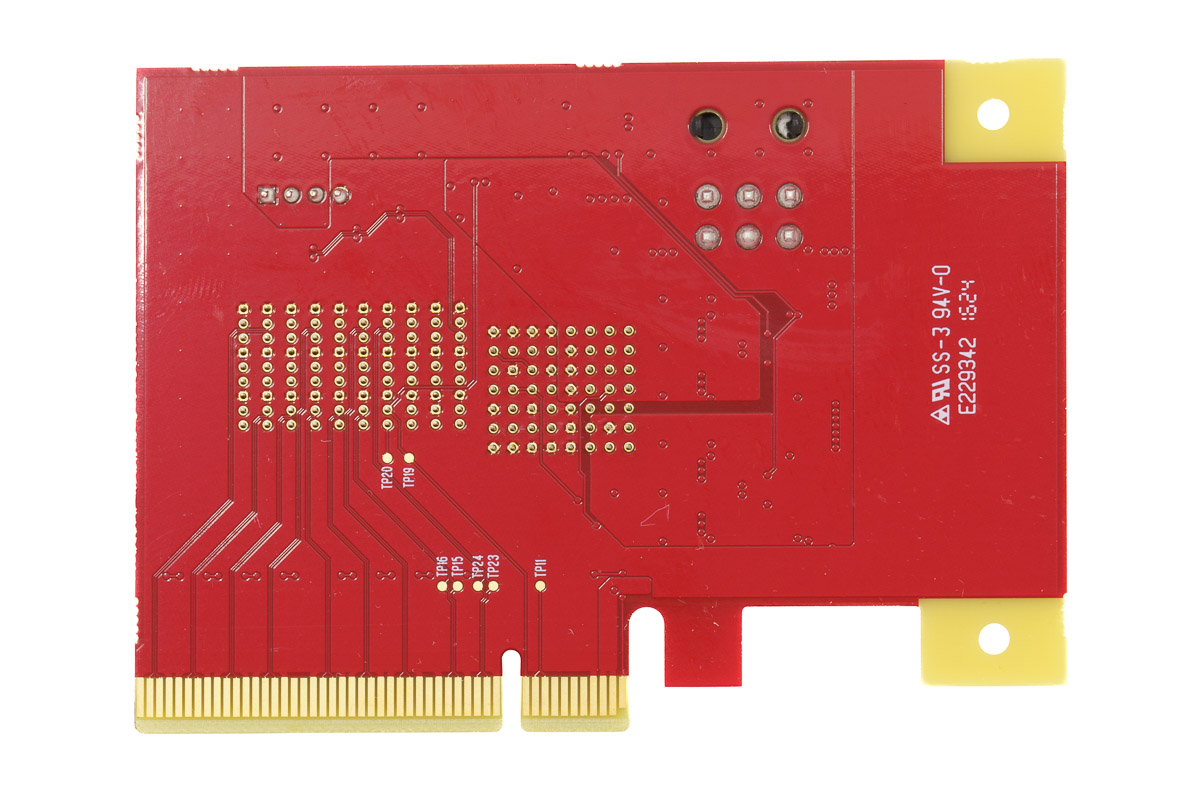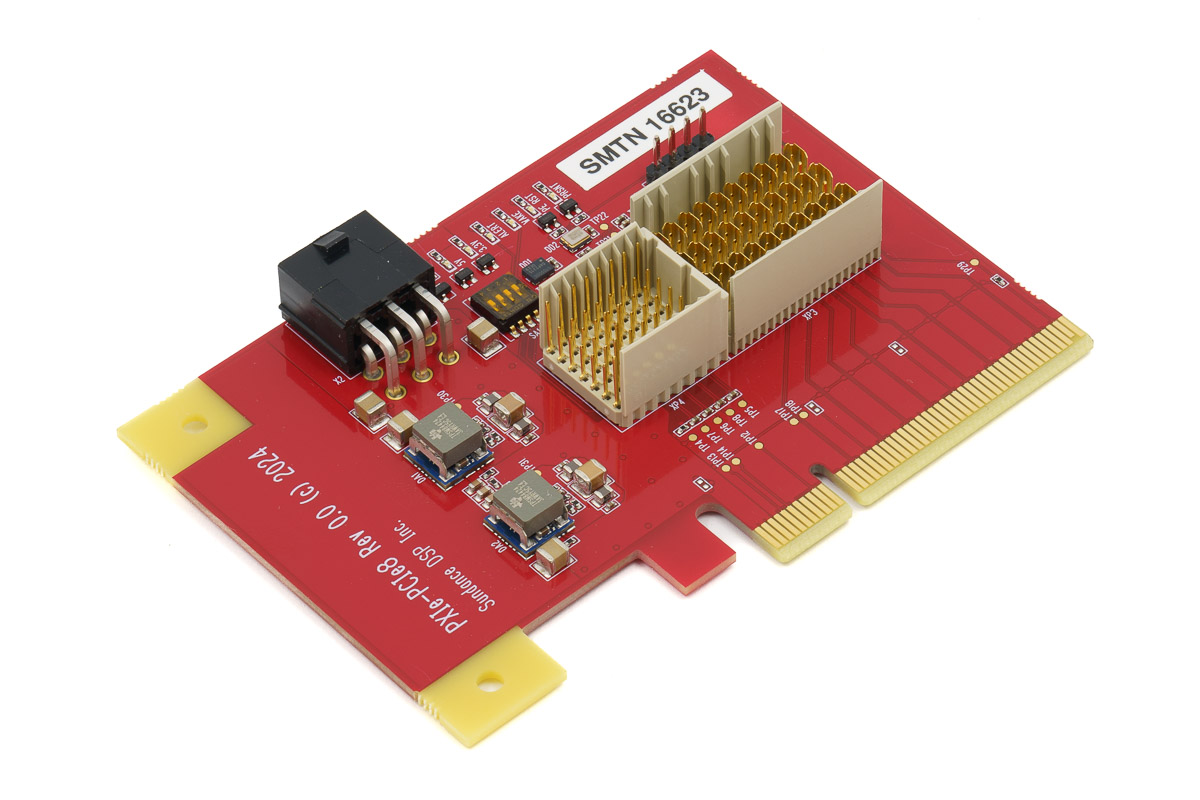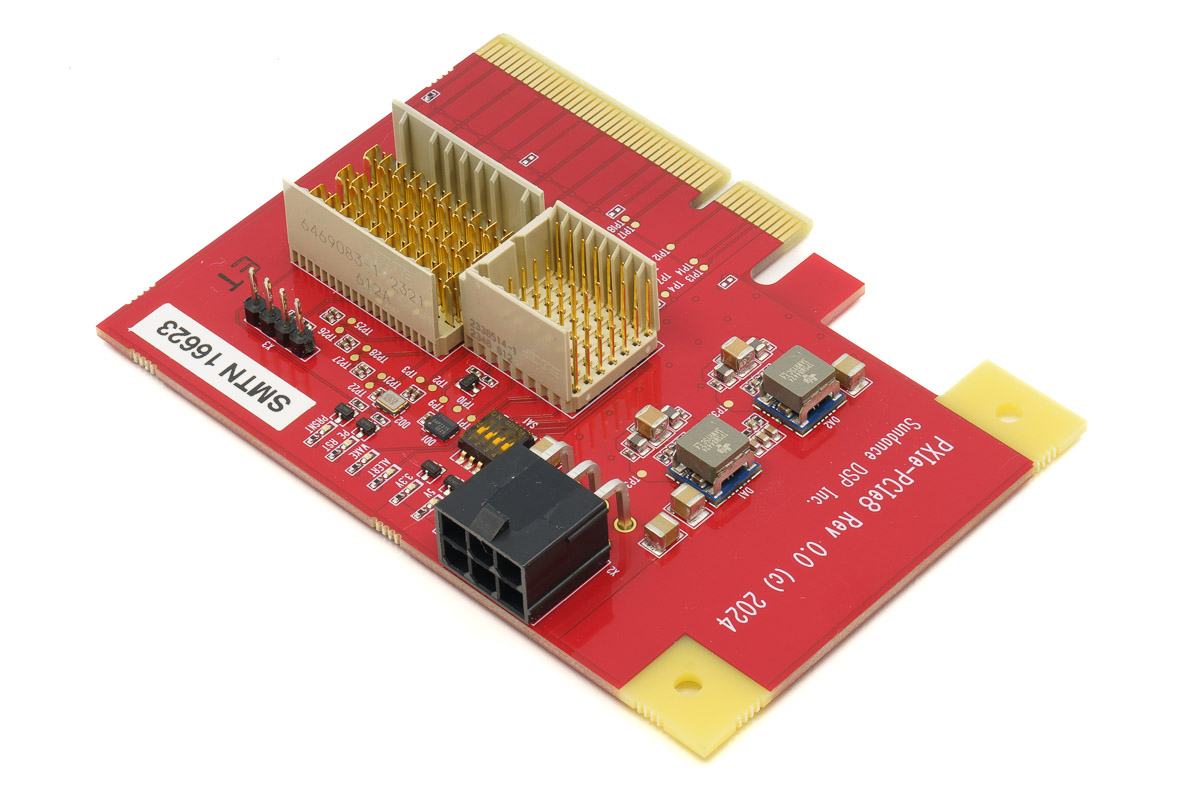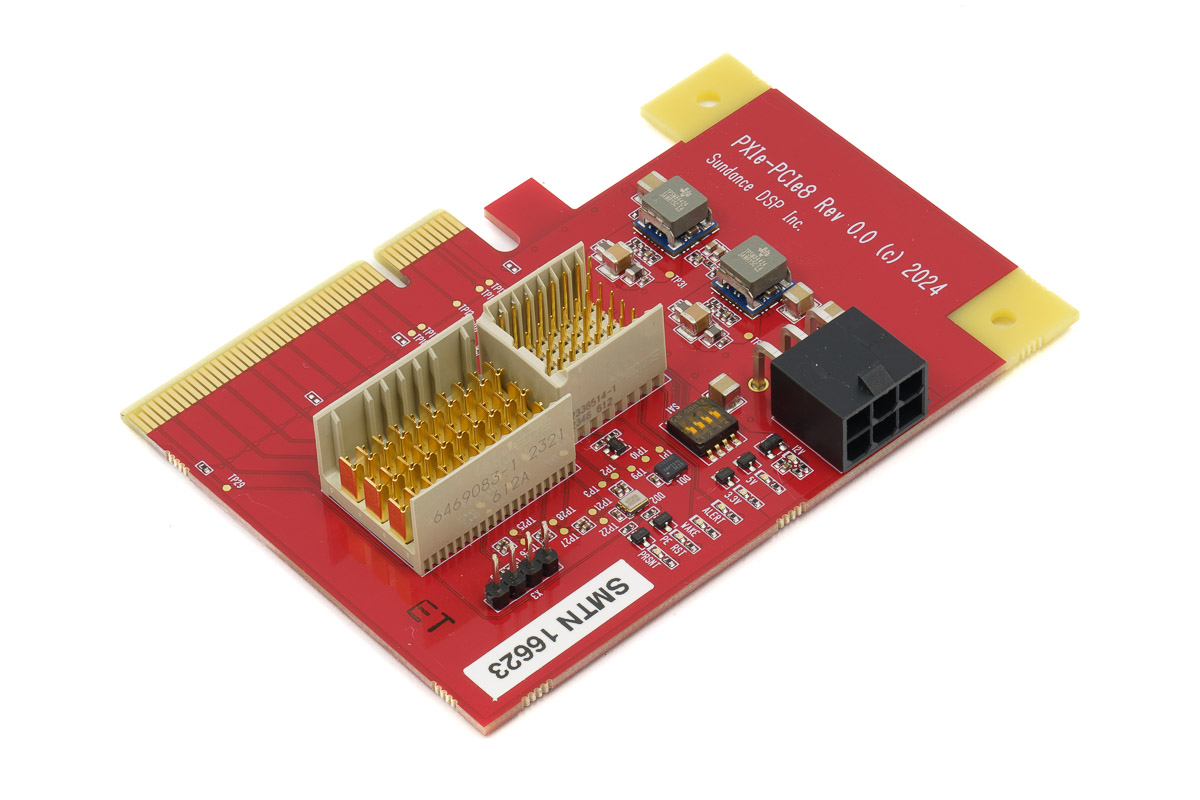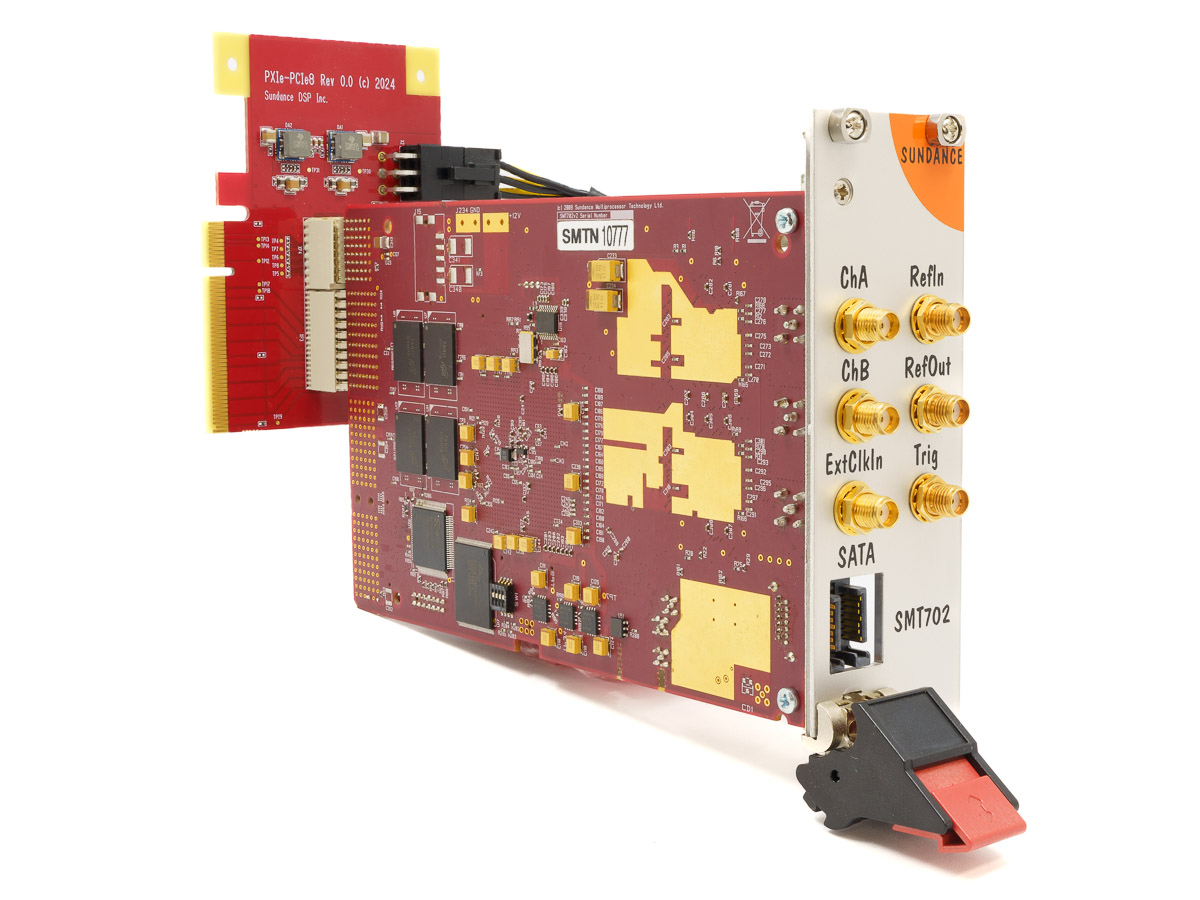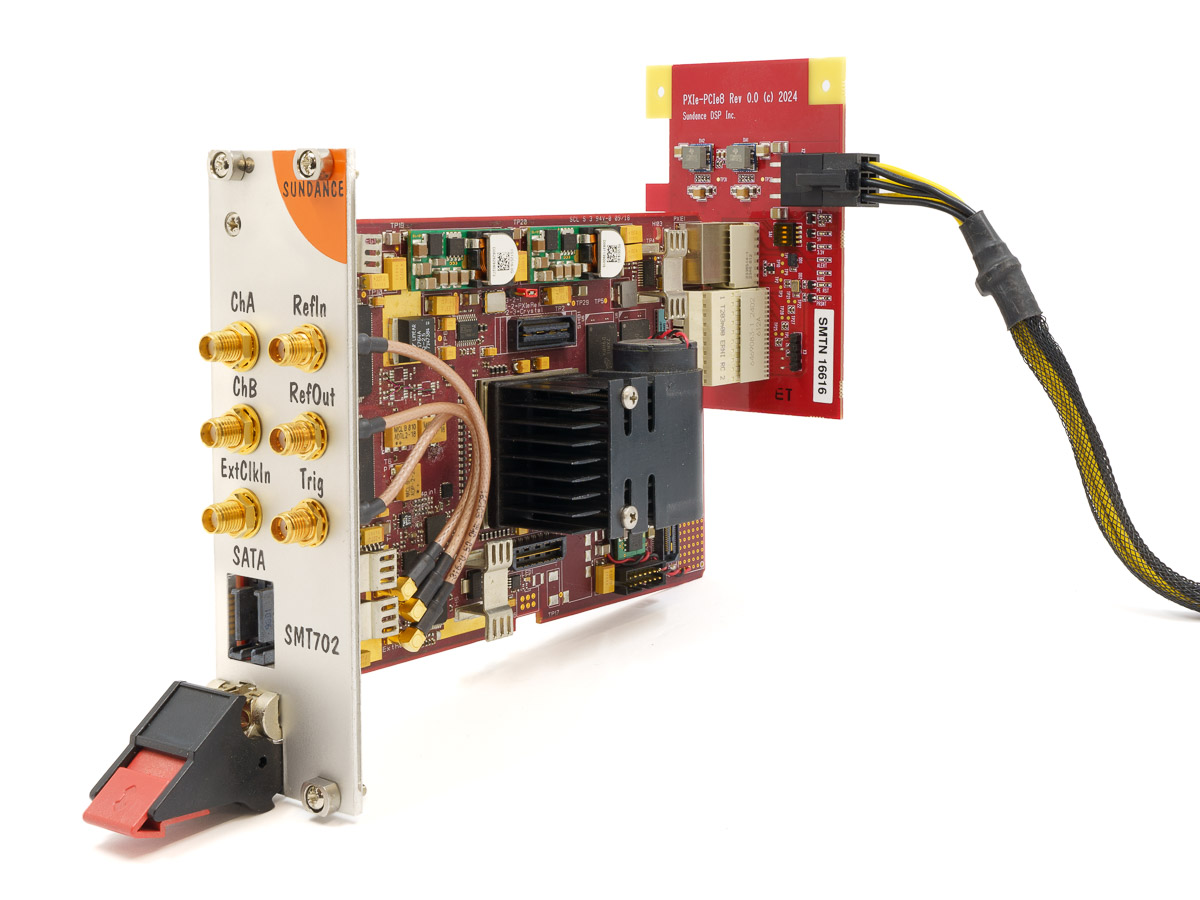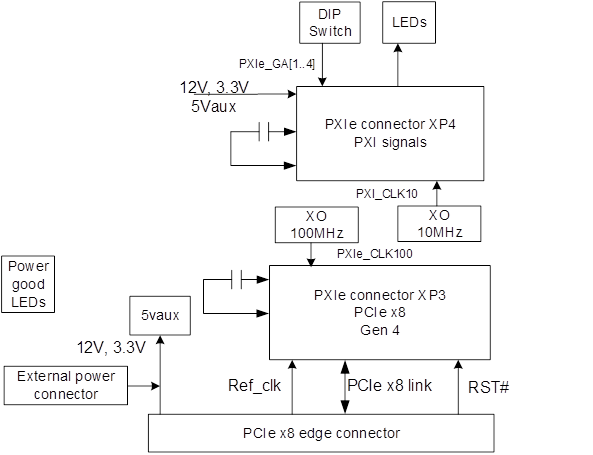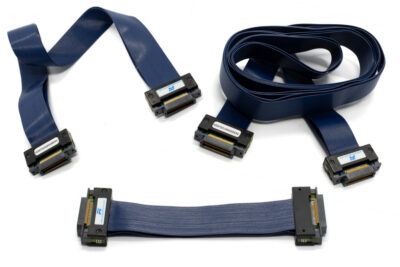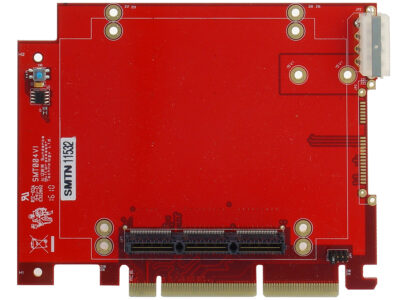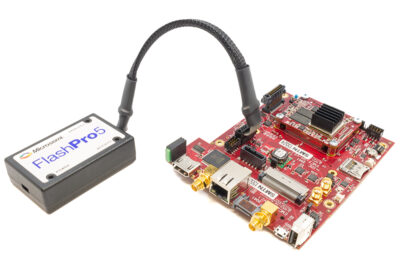Description
The PXIe-PCIe8 is designed for rapid firmware development and testing of PXIe peripheral 3U boards, without the need for a PXIe chassis. It allows you to connect any PXIe peripheral 3U board to your PC via a PCIe x8 interface and access its features and functions through a SMBus interface. It also provides test points and loops for measuring and monitoring PXI_TRIG and PXIe_DSTAR signals, as well as user LEDs for indicating PXI_TRIG[0,1] status. It has dip switches for selecting the slot address of the PXIe peripheral board and on-board crystal oscillators for generating 100-MHz and 10-MHz PXIe clocks. It can be powered by either the PCIe slot or an external power connector, with 12-V and 3.3-V supply voltages.
With PXIe-PCIe8, you can easily and quickly develop and test your PXIe peripheral 3U boards without investing in a PXIe chassis. It is ideal for prototyping, debugging, and validating your PXIe applications.

